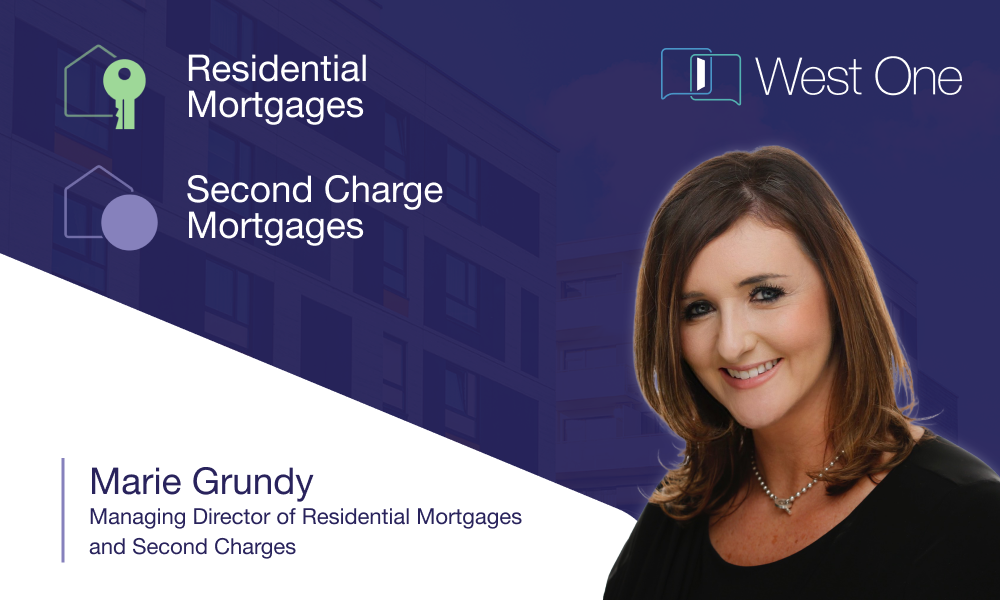Marie Grundy, Managing Director of Residential Mortgages & Second Charges
The second charge market is booming, with new business volumes soaring 40% last year, according to the Finance & Leasing Association (FLA).
In fact, the £1.6bn that second charge lenders advanced last year was the most since 2008. While those numbers pale in comparison with the first charge market, they show a clear and growing demand for second charge loans as a means of capital raising. Part of that is down to greater awareness among both brokers and borrowers, but there are other market forces at play.
I believe wholeheartedly that the conditions are perfect for the second charge market to thrive over the coming 12 months - and possibly even beyond. Here are three reasons why I expect that second charges are fast becoming a mainstream option.
Higher mortgage rates
The speed at which mortgage rates role last year caught many by surprise, especially those homeowners who have known nothing else but rock-bottom rates for the past decade. Some 1.8 million of those are likely to be surprised at how much their repayments are about to increase when they reach the end of their fixed rate this year.
Due to affordability constraints, and the fact that certain groups of borrowers may have experienced a change in their circumstances over the past 12 months, product transfers will become more popular. In fact, UK Finance predicts that product transfers will account for £212bn of lending in 2023, a 7.6% increase on last year.
At the same time, there are millions of borrowers still on attractive long-term fixed rates with steep early repayment charges (ERCs). For borrowers who find themselves in these circumstances, it will be less viable to consider remortgaging, either because of affordability compression or the cost of sacrificing a low interest rate mortgage. Therefore, a second charge will become an increasingly appealing option.
Debt consolidation
The past 12 months has been tough on household finances, with nearly 8.9 million adults showing signs of financial fragility, according to joint research by PricewaterhouseCoopers and Totally Money. The same research found that the UK's total unsecured debt pile now stands at £400bn, meaning that the average UK household owes a record £16,2000 to personal loan, credit card and other unsecured debt providers. That is an increase of more than £1,000 in the past year.
If you throw higher taxes, rising interest rates and sky-high inflation into the mix, it's clear that household finances are going to come under intense pressure again in 2023. Therefore, there will be lots of families out there looking for ways to maximise their disposable income, while also reducing their monthly debt repayments.
In the right circumstances, debt consolidation can help families navigate the cost-of-living crisis, and second charge mortgages are a valid way of doing that. As a result, I expect more people to consider a second charge mortgage for the purpose of debt consolidation over the next 12 months.
Stagnant housing market
We are already starting to see confidence in the housing market beginning to wane as a result of the cost-of-living crisis and higher mortgage rates. Nationwide's latest house price index shows that property values fell 1.1% in the year to February - the first annual fall since 2012.
A stagnant, or even contracting, housing market means potential buyers and sellers may be reluctant to move for as long as there is uncertainty around house prices. Many may instead opt to extend or improve their existing home by releasing equity from their property. This is where second charges come into their own.
They are flexible, have quick completion times, and many lenders offer generous loan sizes, meaning seconds are suitable for both minor and major renovations. A second charge mortgage will be particularly attractive for borrowers locked into an attractive long-term fixed rate that they don't want to disturb.
Bright future
The second charge market has promised so much for so long but remains relatively small compared to the first charge, buy-to-let and bridging markets. However, as I've outlined above, all the pieces are lining. I genuinely could be when we see the second charge loan truly become mainstream.
